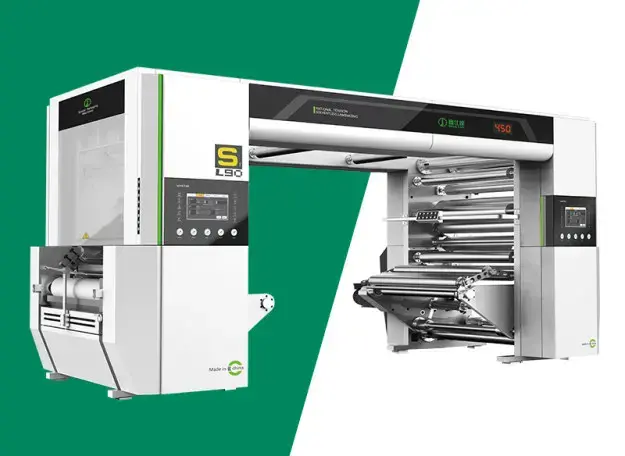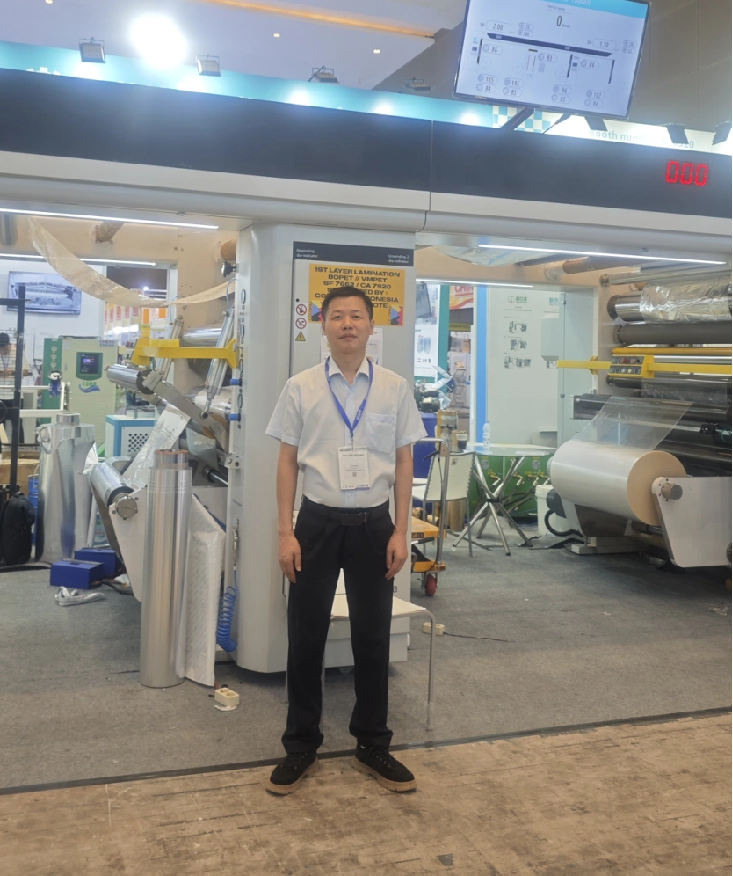Solventless Lamination Technology – Effectively Controlling VOCs Emissions
The products in the packaging and printing industry are inseparable from the use of organic solvents, which brings many emissions of VOCs. Solventless lamination technology adopts a solvent-free adhesive instead of solvent-based adhesive, which can avoid VOCs emissions from the source.
What Is Solventless Lamination Technology
Solvent-free laminating technology is an important environmentally friendly technology applied to the flexible packaging industry. It is a machining method which adopts a solvent-free adhesive to make the membrane substrate such as plastic film or other film-shaped material laminate each other, through the curing process which is a chemical reaction of the adhesive, making each layer of substrate firmly bonded together, thus, multi-layer composite films are obtained.
Advantages Of Solventless Lamination Technology
Compared to traditional dry laminating, solventless lamination has significant advantages in the following aspects.
Saving resources
Due to no solvent use, it saves solvent costs and saves a large amount of energy consumption without the dried process. With less gluing, the coating weight of solvent-free lamination unit area adhesive is two-fifths of the coating weight of dry laminating unit area adhesive.
Safety and environmentally friendly
The adhesive of a solvent-free lamination is 100% glue, which does not contain any solvent, thus, in the production process, except that during the time of shutdown, there is a need to clean the gluing portion with a small amount of solvent, there are no emissions of solvent, VOCs and other pollutants, which will not produce pollution for the health and surrounding environment of the production worker. No combustible, explosive organic solvents in solventless laminating technology, there will be good safety. The hygienic performance of the composite film will not be reduced due to the existence of residual solvent.
Low costs
Each solventless laminating production line will have much less energy consumption than a dry laminating production line. The solventless laminating machine has high speed and the production cost can be lowered. The highest speed of the solventless machines is above 600 m/min, generally in 200m/min. As there’s no waste generated, there is no need to configure expensive environmental equipment and corresponding operating expenses.

What Should Be Paid Attention To In The Applications Of Solventless Lamination Technology
Determining the components of the solventless adhesive
The A component of the two-component solventless adhesive is easy to react with the water, affecting the adhesive ratio, thereby affecting the laminating quality of the product. So the requirements of the solventless lamination process for water vapor are particularly strict. The relative humidity of the workshop and the adhesive storage library are as low as possible. The drying and filtration of the gluing system must be thorough.
For the lamination of paper to aluminum and paper to plastic, a one-component solvent-free adhesive will be an economic choice. However, moisture is involved in the curing process for the application of a one-component solvent-free adhesive and moisture needs to be added to ensure the curing of the lamination. This laminating method is subject to certain restrictions in dry winter and should be paid attention to.
Sample test
Nowadays, each flexible packaging company has its own unique product and technical characteristics. The raw materials used in each company are not the same. The substrates, inks and solvents used in different products are also various. The molecular weight of the solvent-free adhesive is generally Low and it is easily affected by external factors. Therefore, each product is recommended to have a sample test before first adopting solventless lamination technology and then put into mass production after the test is passed.
Pay attention to the individual differences in special products
Due to the low molecular weight of the solvent-free adhesive and the extremely strong penetration, the problems of adopting solventless lamination for some products will occur, which requires special attention. For example, when the laminating substrate is thin and the flexible package products with the auxiliaries which contain a large amount of molecular weight, adopting solvent-free lamination process, the adhesive will penetrate the substrate and In severe cases, it can accumulate on the thermal surface of the substrate, by secondary reactions, generating urea and other derivatives, which affects the heat-seal quality of the product. In addition, due to the high permeability of the solventless adhesive, the color of the product is different when using the solvent-free laminating process for some flexible packaging products which require printing. Moreover, the edge of the printing pattern for the lamination product will become larger and the stroke of the small text will be thicker.
Summary
With the emphasis of lamination packaging companies on solvetless lamination Technology, this new type of laminating process has a significantly accelerated development trend. The more and more laminating machine adopts the solvent-free laminate process, which can avid the emissions of VOCs with the advantages of healthy, safety, low energy consumption, saving resources and production cost.



